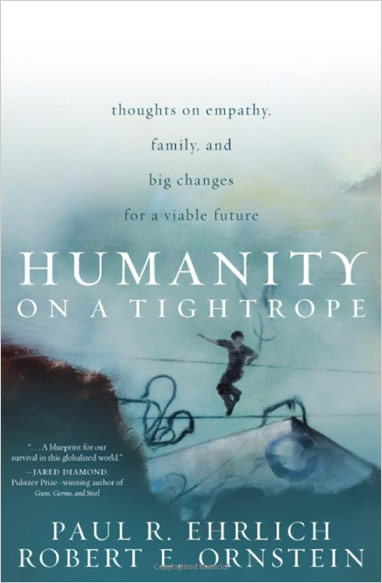
Forest Smarts: A Part of or Apart From?
David S. Sobel, MD | December 14, 2022
Some years ago, I had the opportunity to take a walking tour of a rainforest in Australia. My guide had trained many years with Aboriginal guides before him and had a deep love and appreciation of the forest. This section of forest had been designated as a national preserve to protect it from further human destruction. There could be no logging, no hunting, no harvesting. In fact, humans were prohibited from touching, moving, or removing anything from this forest. This seemed to me to be a smart move.
Then the guide shared with me the unintended consequences of these well-intentioned government rules. I was told that the Aboriginal people learned over thousands of years how to live sustainably in this forest by selective harvesting and hunting to meet their needs to survive and at the same time keep the forest healthy. The new rules which removed all human participation in the ecosystem had an unfortunate effect. Without selective culling of pythons (remember, no hunting or even relocation of animals permitted), the python population exploded and decimated the mammal and bird population of the forest. These losses rippled through a disordered ecosystem of which humans were once an active part.
We now think that nature needs to be protected from humans. True enough, for modern civilizations do tend to set humans above and apart from natural systems. But is that always the case for all human activity? Is there a strict dichotomy between humans and the rest of nature? Perhaps we can learn much from indigenous populations who lived as an integral part of nature—and the ‘forest smarts’ they practice. This is not to romanticize indigenous people living with nature. Life can be hard: predators, famines, climate events make their lives less than idyllic. But respecting and learning from the practices of traditional societies may suggest solutions to be tried to address global problems.
Earth has endured and survived extreme climate change more than once, with varying impacts on natural life. This time is different. We know the history. We know what’s happening and the impact of our own actions. We understand the limits to crucial resources and what will happen if we do nothing. Most importantly, we have the ability to correct our course in pursuit of a viable future. Are we up to the challenge?
– The Human Journey website: A Sustainable Planet
Given the global environmental and climate crisis, how do we shift the hearts and minds to protect the planet? Some mindsets can be shifted with facts and figures—graphs of rising temperatures, CO2 emissions, rising sea levels, etc. Others maybe changed by directly experiencing the effects of climate change—record temperatures, severe droughts, or unprecedented flooding. Still, others must first learn to love natural environments before they can take action to defend and protect them.
Yet, the current generation of children raised in the “concrete jungles” of urban environments may suffer from “nature deficit disorder”- mental and physical health problems associated with lack of exposure to nature. In one survey, 41% of children do not know where eggs come from. How will these children understand the importance of natural environments, let alone fight to save them?
So, as I walked through a primordial rainforest, my thinking shifted. Instead of seeing humans as intruders at odds with nature, I tried to see myself as a part of the ecosystem. Exposure to natural environments is critical to rediscovering that we are a part of nature. It can be as grand as a hike in awesome mountains or as simple as a stroll through the neighborhood to notice the smallest glory of the natural world (a flower, bird call, sunlight through leaves, etc.). To protect nature, we must fall in love with nature. People protect what they love, and what they feel part of.
As Satish Kumar, author of Soil, Soul and Society and Editor Emeritus of the Resurgence Trust said, “We are nature. What we do to nature, we do to ourselves.”
David S. Sobel, MD, is an Adjunct Lecturer in the Department of Medicine at the Stanford University School of Medicine. He is coauthor of ten books including three with Robert Ornstein, entitled The Healing Brain, Healthy Pleasures, and The Mind & Body Health Handbook.
Recent Blogs
- Style-Shifting: Why We Speak Differently Around Friends
- Can We Make More Accurate Predictions In Economics?
- Our Subpersonalities and Many-Sided Selves
- The Illusion of Predictability in Economics
- An Old Story About Metaphysics
- The Conditioning Machines in Our Back Pockets
- Out on a Limb: The Danger of our Innate Shortsightedness
- Edward T. Hall: Culture Below the Radar
- The Half Brain Method
- 'He Who Tastes Knows': Contemporary Sufi Studies and the work of Idries Shah
- "They Saw a Game"
- A Funny Thing Happened on the Way to Enlightenment
- Finding the Right Way Home
- Time and Self
- Escaping the Either/Or Thinking Trap
- Looking Up, Looking Out
- Conditioning and the Gendered Brain
- New World, Same Mind?
- One Small Word
- Meaning: The Enduring Gift to Spirit
- Beyond East and West: Human Nature and World Politics
- Forest Smarts: A Part of or Apart From?
- How to Improve Group Decision-Making
- We Know More Than We Think We Do
- How Deep Can a Story Go?
- Lost and Found: An Encounter with the Intuitive Mind
- The Devil’s Tuning Fork
- Welcome to The Human Journey Blog

